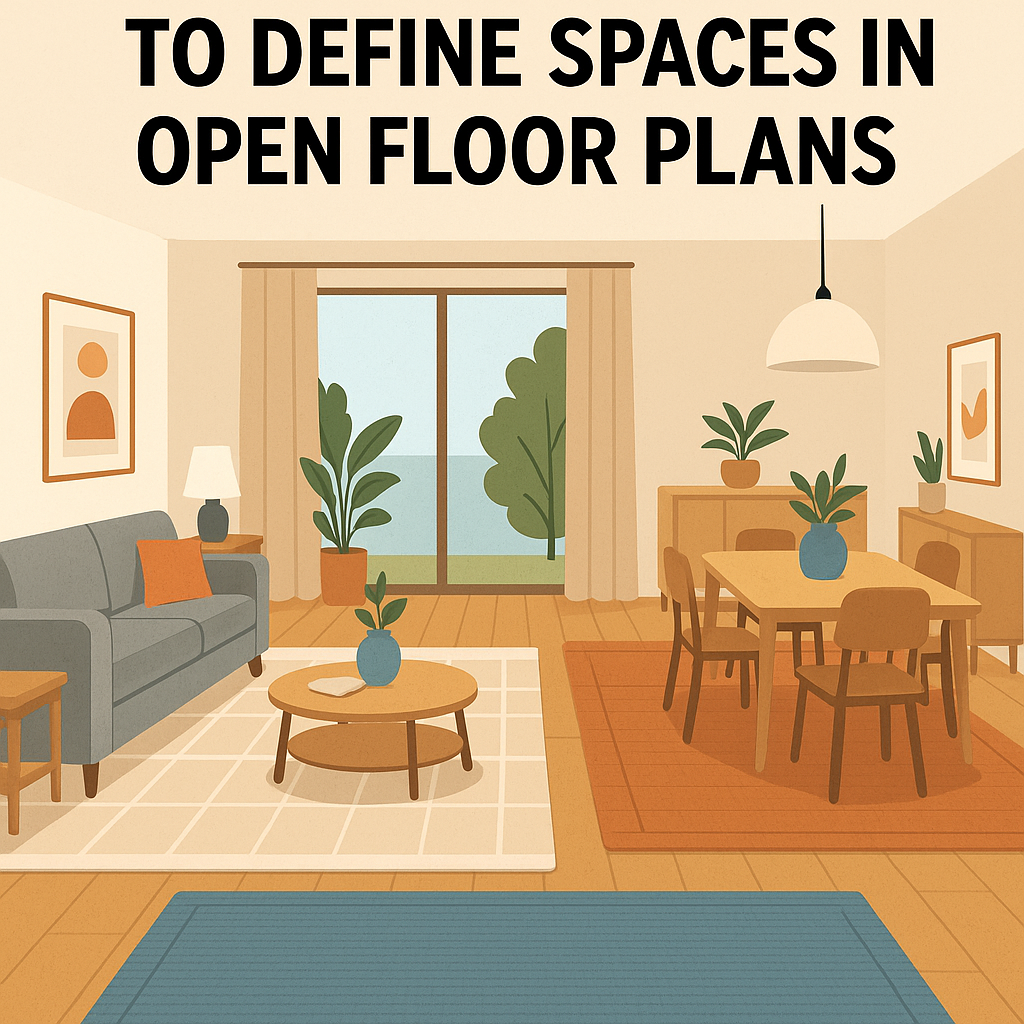Open floor plans offer flexibility, natural light, and a sense of spaciousness — but they can also feel undefined and disorganized without visual boundaries. One of the simplest and most effective ways to create separation without adding walls is through the strategic use of rugs.
Here’s how to use rugs to create visual zones, add warmth, and enhance the style and flow of your open-concept space.
Why Rugs Work in Open Layouts
In an open floor plan, traditional room boundaries don’t exist. Rugs help:
- Define functional areas (like separating the living room from the dining area)
- Anchor furniture groupings, giving each space a sense of completeness
- Add visual structure without interrupting flow
- Enhance sound absorption in echo-prone large rooms
- Introduce style, color, and texture to differentiate zones
Using rugs is especially helpful when the flooring is consistent throughout (such as hardwood or tile), as they add both contrast and comfort.
Define Key Zones with Distinct Rugs
Use different rugs to create visual zones for the most used areas in your open-plan home:
Living Area
- Choose a larger rug that sits under the front legs of the sofa and chairs, and extends beyond the coffee table.
- Go for plush textures for a cozy feel in a lounging space.
- Avoid tiny rugs that float under the coffee table alone — they can make the space look disconnected.
Dining Area
- Select a rug large enough so that all dining chairs stay on the rug even when pulled out.
- Opt for low-pile or flatweave rugs — they’re easier to clean and better suited for under-table use.
- Neutral tones or patterns that disguise crumbs and stains are ideal.
Workspace or Reading Nook
- A small rug under a desk or reading chair can define a productive or relaxing corner.
- Choose rugs with visual texture or subtle pattern to add interest without overwhelming.
Each rug should feel intentional, coordinated, and scaled appropriately to the furniture around it.
Stick to a Cohesive Color Palette
Even though the rugs help define different spaces, they should still feel visually connected. Follow these tips:
- Use complementary colors or tones: For example, neutral rugs in beige and gray with accent pops of rust or navy.
- Mix patterns and solids: A patterned rug under the dining table and a solid texture under the sofa keeps it interesting but cohesive.
- Stay within one design style (e.g., modern, boho, minimalist) so the rugs don’t clash stylistically.
You can mix textures and patterns as long as they complement each other. A consistent palette will help everything feel united.
Scale and Proportion Matter
Nothing disrupts the flow of an open plan faster than the wrong rug size. Keep these guidelines in mind:
- Living Room: At least 8×10 feet for medium spaces; larger rooms may need 9×12 or more.
- Dining Room: Add at least 24 inches to each side of the table to allow chairs to stay on the rug when pulled out.
- Small Areas: A 4×6 or 5×7 rug works well for nooks or reading zones.
Too-small rugs make your furniture look out of place. When in doubt, go bigger.
Layer Rugs for Style and Definition
Layering rugs is a great way to add depth and texture — and it’s ideal for defining smaller zones in large spaces.
- Use a large, neutral jute or sisal rug as a base.
- Add a patterned or colorful rug on top to define a more specific zone like the seating area.
- This approach works especially well in minimalist spaces or when working with a tight budget.
Use Rugs to Direct Traffic Flow
In large spaces, rugs can help subtly guide foot traffic and indicate movement paths. For example:
- Place rugs to lead from the entryway to the main seating area.
- Use a runner to define the kitchen area or hallway section within an open space.
- Use rug placement to create a natural pause between areas (e.g., between the dining table and lounge).
This strategy adds rhythm and structure to your layout.
Combine with Lighting and Furniture Arrangement
To enhance the space-defining power of rugs, pair them with:
- Pendant lights or chandeliers over each zone (like the dining table or reading area)
- Distinct furniture groupings (like a sofa facing away from the dining area to create a boundary)
- Side tables, plants, or shelves that visually frame each rug-defined area
Each element works together to shape a balanced, functional space.
Keep Maintenance in Mind
In high-traffic, open-plan areas, choose rugs that are:
- Durable and stain-resistant
- Easy to vacuum or spot-clean
- Low-pile or flat-woven for dining or kitchen zones
- Comfortable underfoot for lounging or sitting areas
Look for materials like wool blends, polypropylene, or washable cottons.
Design That Flows and Functions
Rugs do more than warm up your floors — they shape how your open floor plan feels and functions. With smart choices in size, style, and layout, you can use rugs to define zones, create balance, and turn one large space into a beautiful collection of purposeful areas.
Whether you’re styling a studio apartment or a spacious family home, let your rugs do the zoning work — stylishly and affordably.
